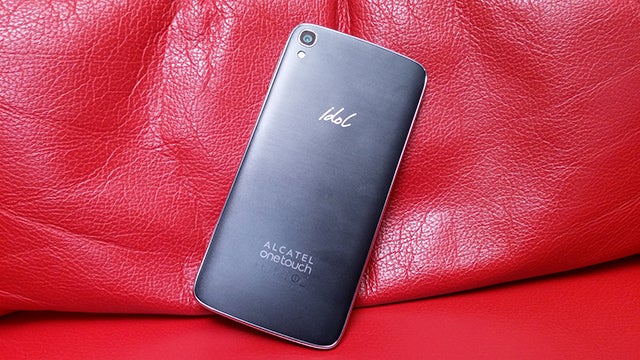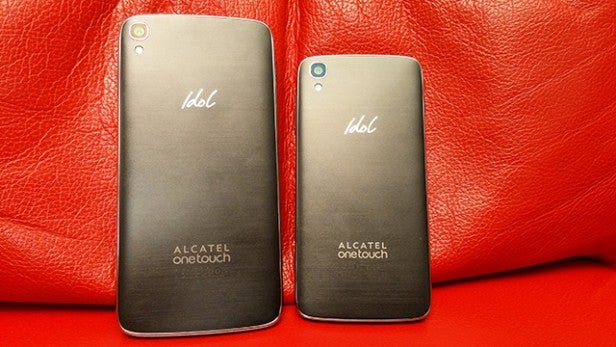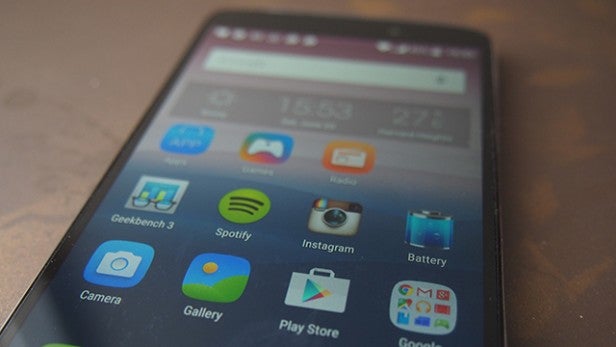Alcatel OneTouch Idol 3 Review
Alcatel OneTouch Idol 3
Looks good, but Alcatel's flagship phone is let down by some performance issues

Sections
- Page 1 Alcatel OneTouch Idol 3 Review
- Page 2 Software and Performance Review
- Page 3 Camera Review
- Page 4 Battery Life, Call Quality, Speakers and Verdict Review
Verdict
Pros
- Attractive plastic design
- Some unique Android tweaks
- Impressive sounding speakers
- Sharp Full HD screen
Cons
- Laggy when multitasking
- 13-megapixel shooting not as reliable as 10-megapixel shooting
Key Specifications
- Review Price: £260.00
- 5.5-inch Full HD 1080 IPS LCD screen
- Snapdragon 615 quad-core CPU with Adreno 405 GPU
- 13-megapixel main camera with LED flash
- JBL-powered front-facing speakers
- Android 5.0 Lollipop
- 8-megapixel front-facing camera
- 32GB storage with 2GB RAM
What is the Alcatel OneTouch Idol 3?
The Alcatel OneTouch Idol 3 is the company’s flagship Android phone. It’s unlikely to be spoken of in the same sentence as the Samsung Galaxy S6 or the HTC One M9 for a couple of reasons. Firstly, Alcatel doesn’t have the marketing pull to compete with the Apples and Samsungs of this world. Secondly, it’s significantly cheaper than those top-end phones.
Alcatel has taken the unusual step to offer the Idol 3 in two sizes. We’ve lived with both the 4.7in (£150) and the 5.5in model (£260), but it’s the bigger of the two that we’ll focus on in this review. While both models share the same design philosophy, spending a little more will buy you better specs.
So can the Idol 3 compete with the very best? Well it certainly makes a great attempt, and here follow the reasons you should consider this reasonably priced Android handset.
SEE ALSO: 12 Best Android Phones in 2015
Alcatel OneTouch Idol 3 – Design
While there’s no sign of the high-grade glass or aluminium finishes you get with top-end smartphones, Alcatel has certainly done a great job at this price point of making a predominantly plastic phone look elegant.
The combination of the silver plastic edging, two-toned trim and the matte-grey back with a slightly brushed finish all contribute to making the Idol 3 eye-catching. The curved corners add a touch of sleekness to an already slim frame and the plastic feels nice to the touch. Samsung take note: this is how you make a good-looking plastic phone.
Up-front, the screen bezel is slim down the sides, while above and below the screen sit the front-facing JBL speakers. Ports and connections are well spread around the trim, with the micro 3G/4G SIM placed just below the standby button. Puling out the SIM card tray also reveals support for a micro SD card, enabling you to expand storage beyond the 16GB or 32GB depending on the model you go for. Sadly, the rear of the phone – which houses the camera and LED flash – isn’t removable, so there’s no getting to the 2,910mAh battery.
The Idol 3 benefits from dual microphones, as is standard on most phones nowadays, but Alcatel has gone one better here. By combining a switching screen orientation feature, you can now make or take calls no matter which way up you’re holding the phone – and get the same call quality. We’ll get to that in more detail later.

Alcatel OneTouch Idol 3 – Screen
There’s a trend for some phone manufacturers to offer higher-resolution 2K screens, but most will be satisfied with what Full HD 1080p has to offer at this size. For starters, it will have less impact on the battery life.
One of the biggest advantages of opting for the 5.5in Idol 3 over the 4.7in handset is that you get a Full HD screen – and it’s a great one too.
It’s a fully laminated IPS LCD screen, packing in a 400ppi pixel density and a maximum brightness of more than 600 nits. That translates to a sharp, exceptionally bright screen with strong viewing angles. Alacatel has partnered with Technicolor to introduce what it’s calling “Color Enhance technology”. This essentially takes advantage of the Idol 3’s adaptive screen to improve contrast and colour rendering for more vivid colours.
While we wouldn’t say it’s as punchy or as impressionable as Samsung’s AMOLED screens, this is still a fantastic display for the price.
How we test phones
We test every mobile phone we review thoroughly. We use industry standard tests to compare features properly and we use the phone as our main device over the review period. We’ll always tell you what we find and we never, ever, accept money to review a product.


